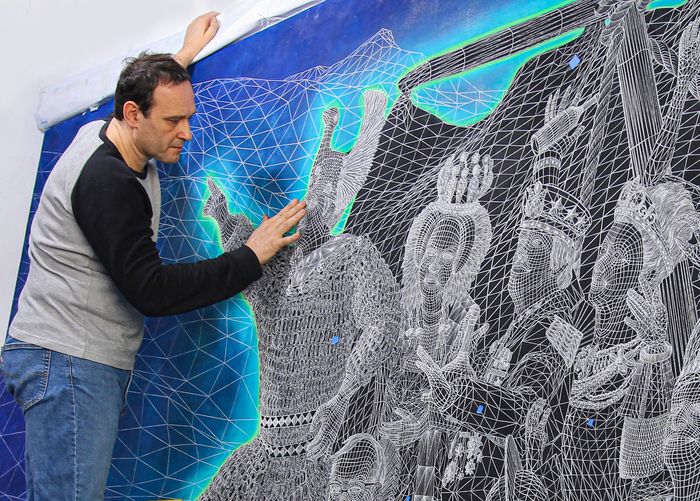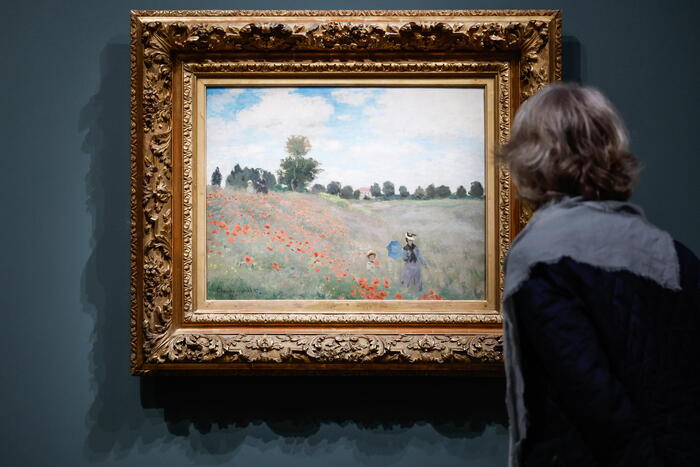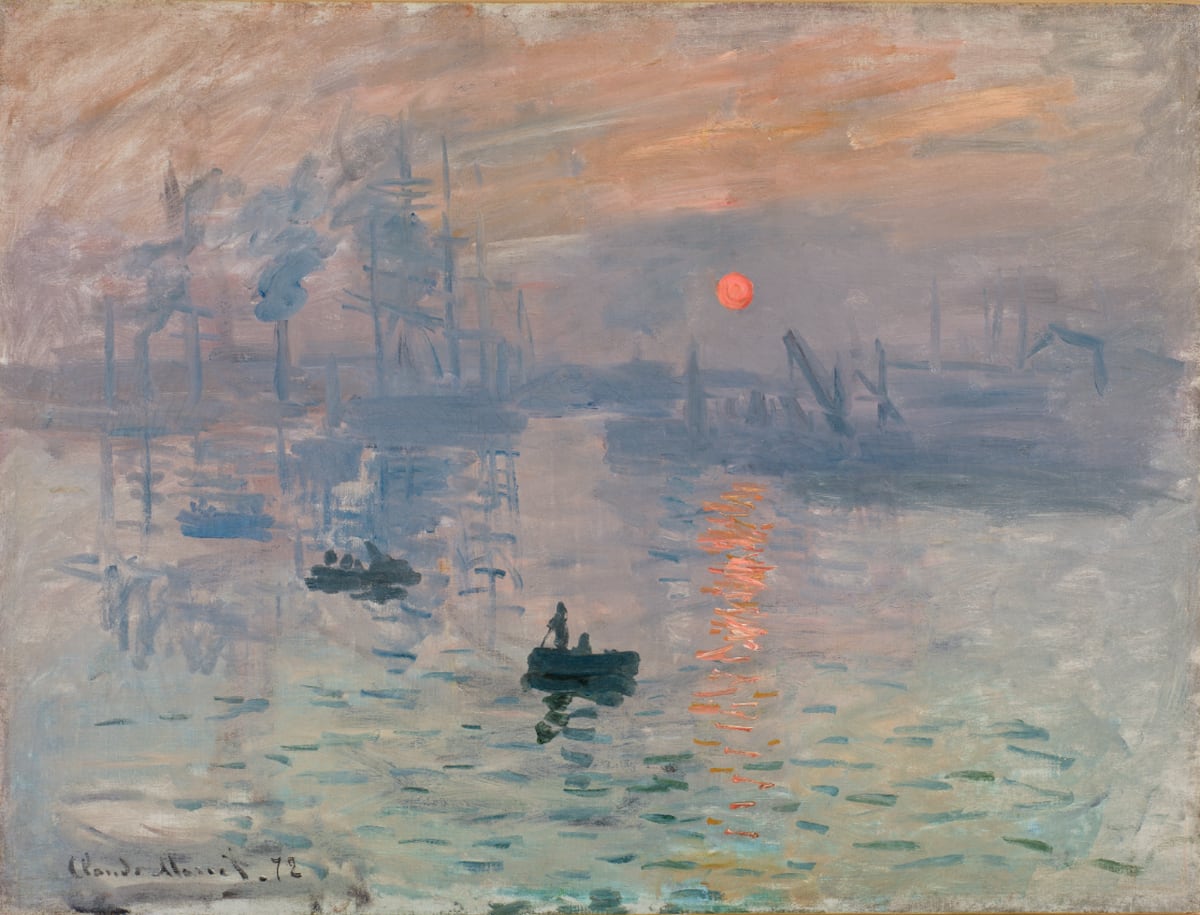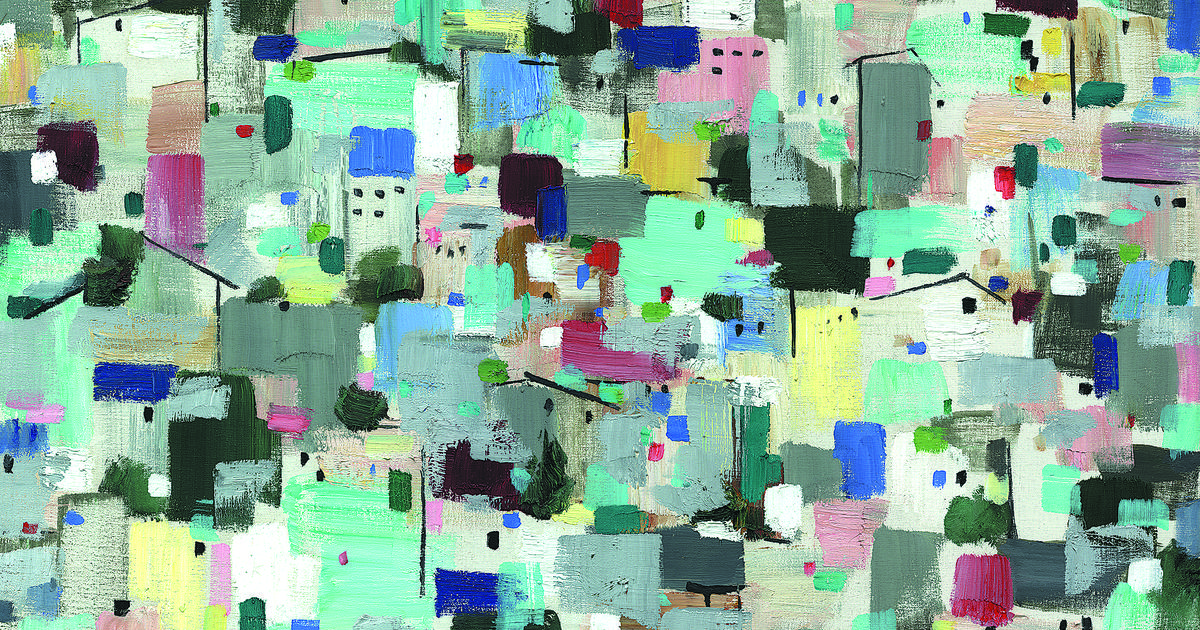Tens of thousands of years ago,
Homo sapiens
left its traces on walls and objects around the world.
As he began his long migration, he adorned them with drawings and paintings of animals, symbols, and sometimes even himself.
From the Altamira caves in Cantabria to the murals of the La Lindosa mountain range in Colombia, passing through the Matobo massif in Zimbabwe, rock art allows us to delve into —albeit in a very limited way— the symbolic worlds of modern man.
An exhibition at the Museum of Man in Paris highlights its richness and diversity.
More information
Three Spanish researchers document hundreds of paintings in the main cave site in India
"In all the places where there were
Sapiens,
there were images," says Patrick Paillet, an expert in prehistoric art and one of the curators of the show.
The works, discovered on all continents and in the most varied landscapes, bear witness to the oldest memory of humanity.
Homo
sapiens
“marked those places with his personality, his culture, his symbols”, points out the also professor at the National Museum of Natural History of France.
Poster of the exhibition 'Art and prehistory', of the Museum of Man in Paris.Museum of Man
In southern China, for example, human representations adorn walls more than 10 meters high.
The drawings, from hundreds of centuries ago, were made on the slopes of some cliffs that overlook a valley with a river.
At that site, called Zuojiang Huashan, you can see sketches of boats, weapons, drums, animals and geometric shapes.
Everything is painted red.
Thousands of kilometers from there, dozens of animals were also carved 25,000 years ago on the surfaces of some rocks.
The Côa Valley, in northern Portugal, is home to engravings of horses, oxen, goats and deer.
A true gallery of prehistoric art that showed that this type of art was not only made in closed spaces such as caves, as was believed for a while.
Human representations in Zuojiang Huashan (China).
Jean-Loïc Le Quellec (MUSEUM OF MAN IN PARIS)
There are hundreds of other examples around the globe: the petroglyphs of Tamgaly in Kazakhstan, the camels and human figures of the Tassili N'Ajjer National Park in the desert south of Algeria, the hunting depictions in the Matobo Mountains region of Zimbabwe or the enormous stone panels of the La Lindosa mountain range in Colombia.
There are still many to discover and even in places where work is already underway there are new elements.
In 2021, for example, researchers revealed the oldest work of figurative art yet discovered: a wild boar painted 45,500 years ago with red mineral pigments in a cave on the island of Sulawesi in Indonesia.
Common elements
After more than a century of discoveries, the databases of Paleolithic art experts were filled with thousands of representations of nature, symbols and traces.
The samples reveal that not only did the same phenomenon occur all over the planet, but also that the drawings showed certain similarities thousands of years apart.
“There is a great diversity, a great richness [in the drawings], but it is based on widely shared references,” explains Éric Robert, a prehistoric art researcher for the National Museum of Natural History and who also commissioned the exhibition.
The
Sapiens
used to represent above all animals, geometric symbols and, to a lesser extent, human figures, often silhouettes.
Rarely have more detailed representations of a face been found.
The exhibition in Paris actually opens with one of them: a profile engraved 17,000 years ago on a stone plaque discovered in the 1930s in the La Marche cave in France.
Profile engraved on a stone plaque found in the cave of La Marche in France. JC Domenech (MUSEUM OF MAN IN PARIS)
By analyzing these figures, the scientists perceived the diversity of styles and techniques used.
But as Paillet insists, they discovered above all hints of the
Sapiens
' relationship with nature.
“We know that they were deeply rooted, that they depended on and belonged to the nature around them,” he says.
“Nature provides an infinite number of things, materials, but also thoughts.
And prehistoric iconography shows us all that, ”he explains.
However, the relationship with the environment differs according to the place and the years, he insists.
riddles
The exact meaning of the works remains a mystery.
“We are facing humanities that have completely disappeared, there are no written traces or testimonies”, highlights Eric Robert.
In fact, we may never know what these prehistoric civilizations meant by them.
A prime example is the omnipresence of both negative [silhouettes with a halo] and positive [direct impression] hands in rock art.
A universal and also timeless motif that has been found in locations as far away as the Altamira cave in Spain, Arnhem Land in Australia or in southern Argentina, in a place that is rightly called the Cueva de las Manos.
Shepherds and cattle painted on the ceiling of a cave in Gilf Kebir (Egypt). Jean-Loic Le Quellec
Do they refer to a presence?
To an absence?
Is it a signature?
"The meaning escapes us, although the images speak to us," says Paillet.
The authors' motivations also remain a matter of debate to this day.
In the documentary
Sapiens, or the birth of art
, the specialist in prehistoric art Carole Fritz indicates that these first images produced by humanity are related to a need.
It is about a society "that is going to become more complex and that needs an organization that asks that things be inscribed (...) on walls and objects".
Sapiens conceive fantastic beings, geometric motifs and symbols to communicate the
"
ideas and concepts that will arise in their brain", Paillet abounds.
They are ways of seeing and perceiving the world, of projecting oneself into it.
Behind each image there could be systems of thought, principles of myths and cosmogony.
Elements that continue to fascinate archaeologists and that are part of an inexhaustible imagination.
Rock art, therefore, constitutes a universal reference for all humanity, concludes the Parisian Museum of Man.

/cloudfront-eu-central-1.images.arcpublishing.com/prisa/MD753C4TGFCI7B7JY57PXL4ZLQ.jpg)







